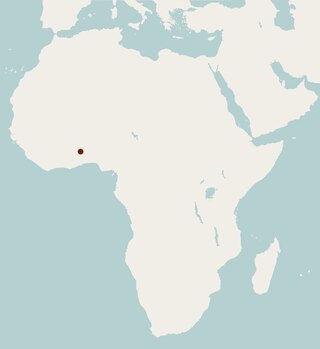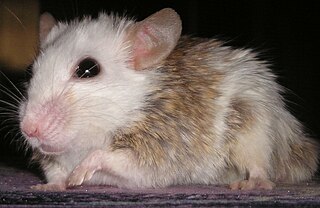Chiruromys lamia, also known as the lamia or the broad-headed tree mouse, is a species of rodent found chiefly in southeastern New Guinea. It is arboreal, living in hollow tree nests, and is found at elevations of 1,200–2,300 metres (3,900–7,500 ft).

The Old World rats and mice, part of the subfamily Murinae in the family Muridae, comprise at least 519 species. Members of this subfamily are called murines. In terms of species richness, this subfamily is larger than all mammal families except the Cricetidae and Muridae, and is larger than all mammal orders except the bats and the remainder of the rodents.

Pseudomys is a genus of rodent that contains a wide variety of mice native to Australia and New Guinea. They are among the few terrestrial placental mammals that colonised Australia without human intervention.

Mice in the genus Dendromus are commonly referred to as African climbing mice or tree mice, although these terms are often used to describe all members of the subfamily Dendromurinae. The genus is currently restricted to sub-Saharan Africa, but fossils classified in the genus have been found from Late Miocene deposits in Arabia and Europe.

The Togo mouse, also known as Büttner's African forest mouse or the groove-toothed forest mouse, is a unique muroid rodent known from only two specimens taken from near the type locality of Bismarckburg, near Yege, Togo, in 1890. Its genus is monotypic.

Leptomys is a genus of rodent endemic to New Guinea. It is considered part of the New Guinea Old Endemics, meaning it was part of the first wave of murine rodents to colonize the island. Leptomys are seen to have minimal adaptations to their aquatic life style. Elongated hind feet accompanied by elongated centre toes suggest the ability to leap. The third molar which is lost is many rodents is retained, albeit smaller. Small eyes and ears can be seen amongst its velvety soft fur.

Dollman's tree mouse is a poorly understood climbing mouse from central Africa. It is unique enough that it has been placed in a genus of its own, Prionomys, since its discovery in 1910.

Chiropodomys is a genus of Old World rats and mice native to Southeast Asia and northeast India. They are tree-dwelling, very small mice, mostly found in tropical rainforest. In total six extant species have been identified, but only one of these, Chiropodomys gliroides, is common and widely distributed, and has been extensively studied.

Maxomys is a genus of rodents, widespread in Southeast Asia. They are mid-sized rodents, similar to rats, that live on the ground of tropical rainforests. There they build nests, padded with fallen leaves from trees. They feed on roots, fallen fruit, and other plants, as well as insects. All species are shy and avoid food from humans.
The greater tree mouse is a species of rodent in the family Muridae. It is found only in Papua New Guinea.
The lesser tree mouse is a species of rodent in the family Muridae found only in Papua New Guinea.

Mastomys is a genus of rodent in the family Muridae endemic to Africa. It contains eight species:
Petromyscus is a genus of rodent in the family Nesomyidae. It is so distinct from other rodents that it is placed as the only genus in subfamily Petromyscinae. In previous classifications, Delanymys brooksi has also been placed in the subfamily. They are found in southwestern Africa. These animals have a sharp lower point to their V-shaped infraorbital canal. Their molars are intermediate between the ancestral cricetid style tooth and the dendromurine style tooth.

Pogonomelomys is a genus of rodent in the family Muridae endemic to New Guinea and nearby islands. It contains the following species:
Champion's tree mouse is a species of rodent in the family Muridae. It is found only in Papua New Guinea.

Pogonomys is a genus of rodent in the family Muridae, found in New Guinea and the D'Entrecasteaux Islands, with one species being found also in Australia.
The large tree mouse is a species of rodent in the family Muridae. It is found on the island of New Guinea.
The chestnut tree mouse is a species of rodent in the family Muridae. It is found in Indonesia and Papua New Guinea.
The gray-bellied tree mouse is a species of rodent in the family Muridae. It is found only in Papua New Guinea.
The D'Entrecasteaux Archipelago pogonomys, also known as the D'Entrecasteaux Archipelago tree mouse, is a species of prehensile-tailed rat from the family Muridae that is endemic to Papua New Guinea. It was once considered to be a subspecies of the Large Tree Mouse. Deforestation is posing a threat to the species, but it has been suspected that the species has some degree of tolerance towards disturbance of its habitat.










